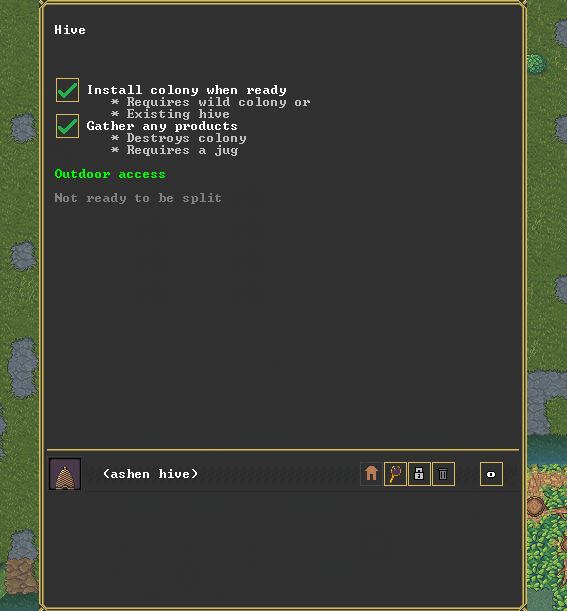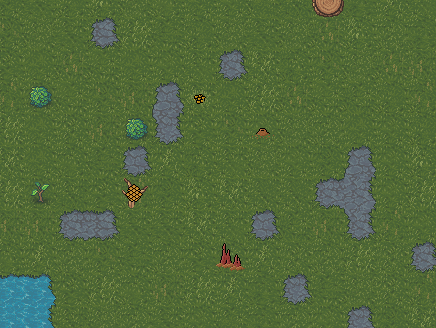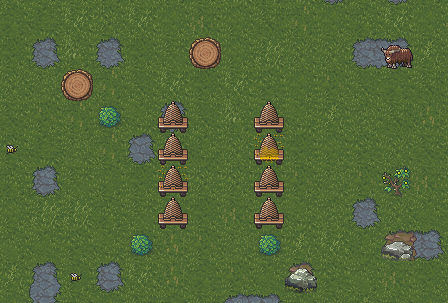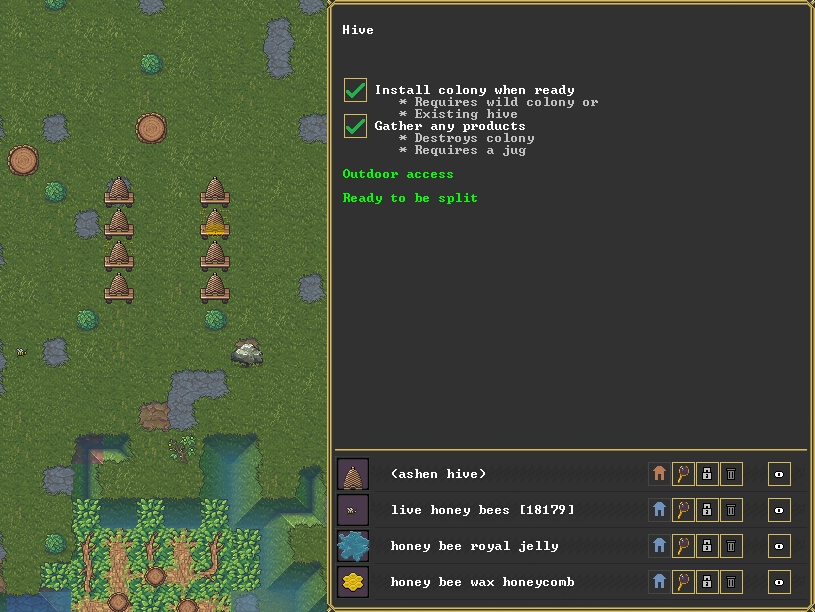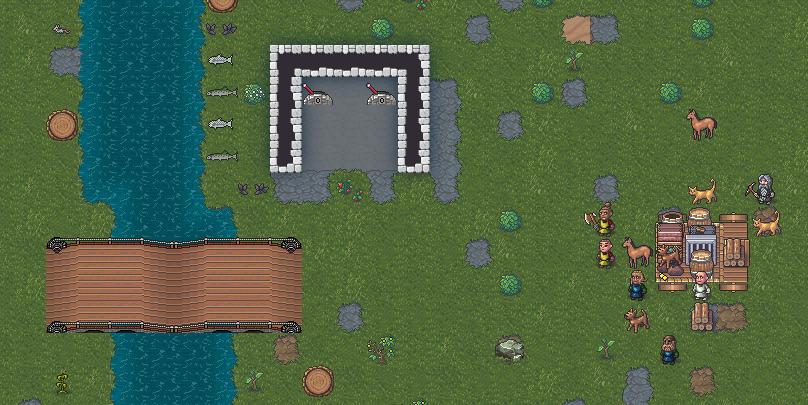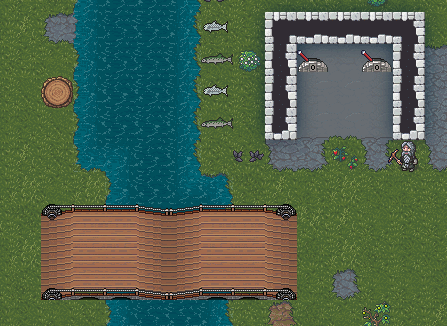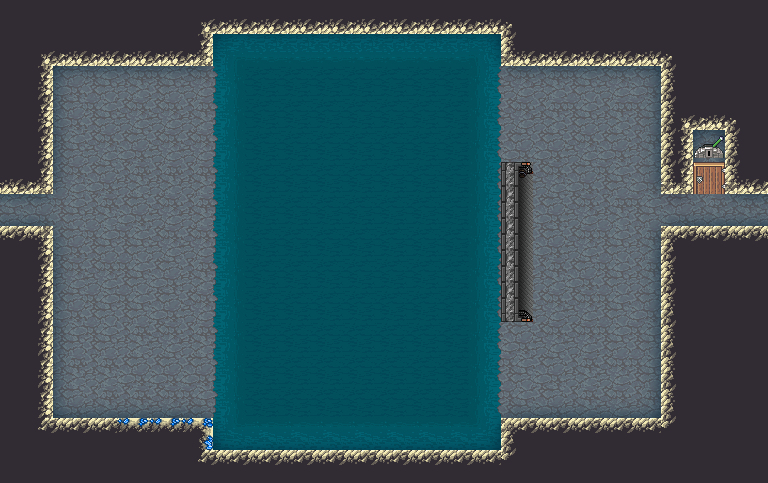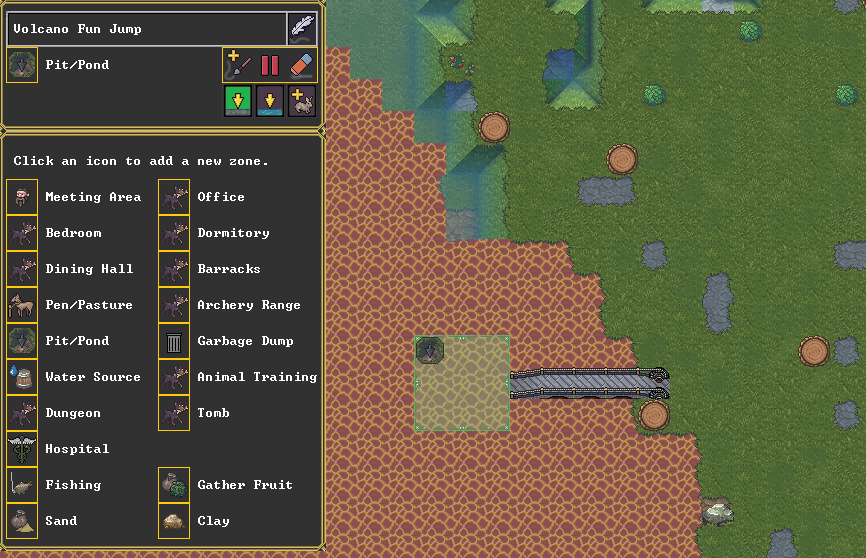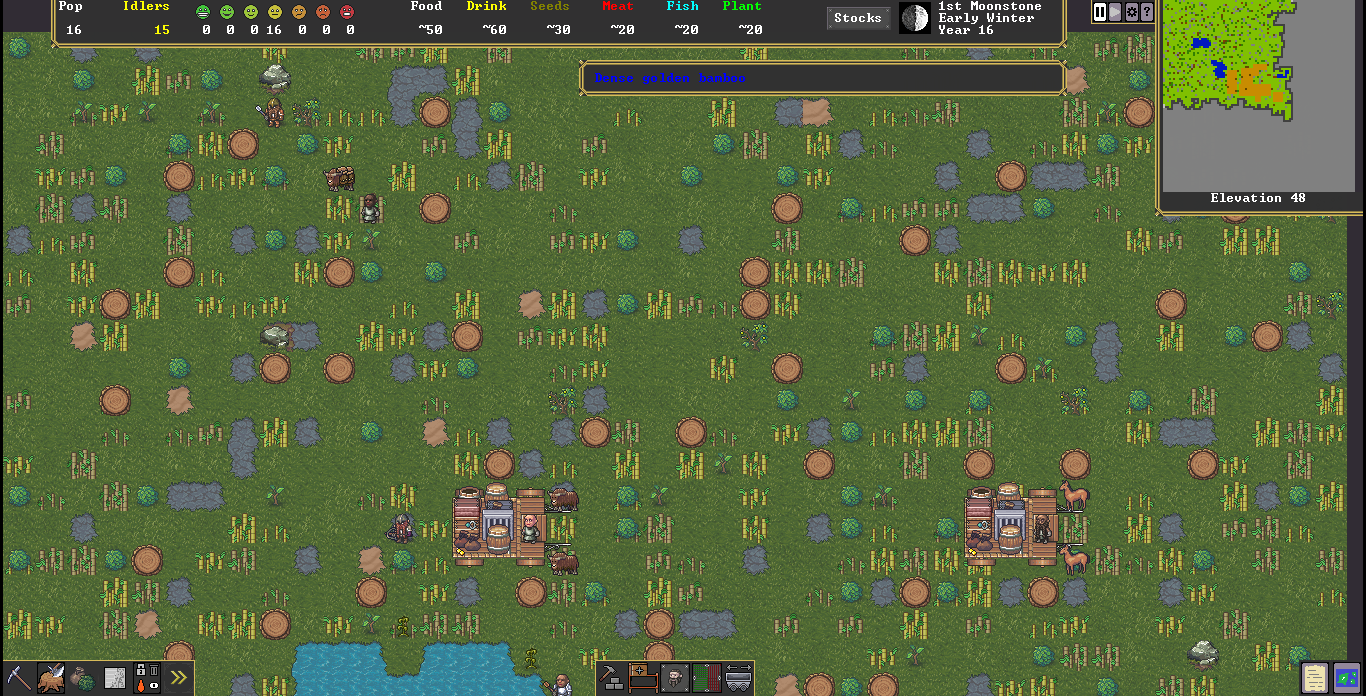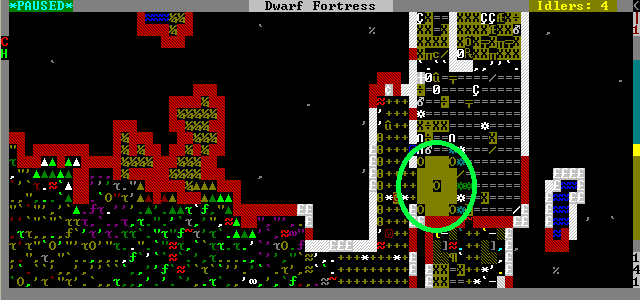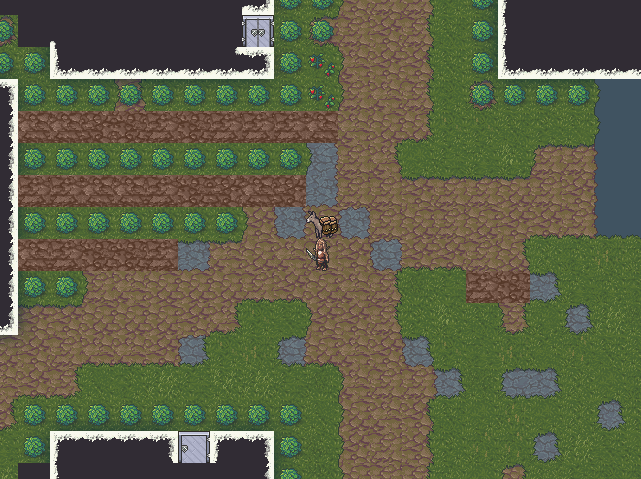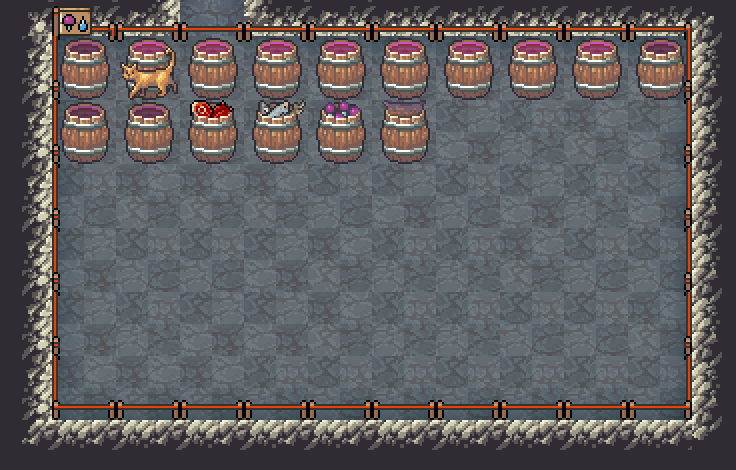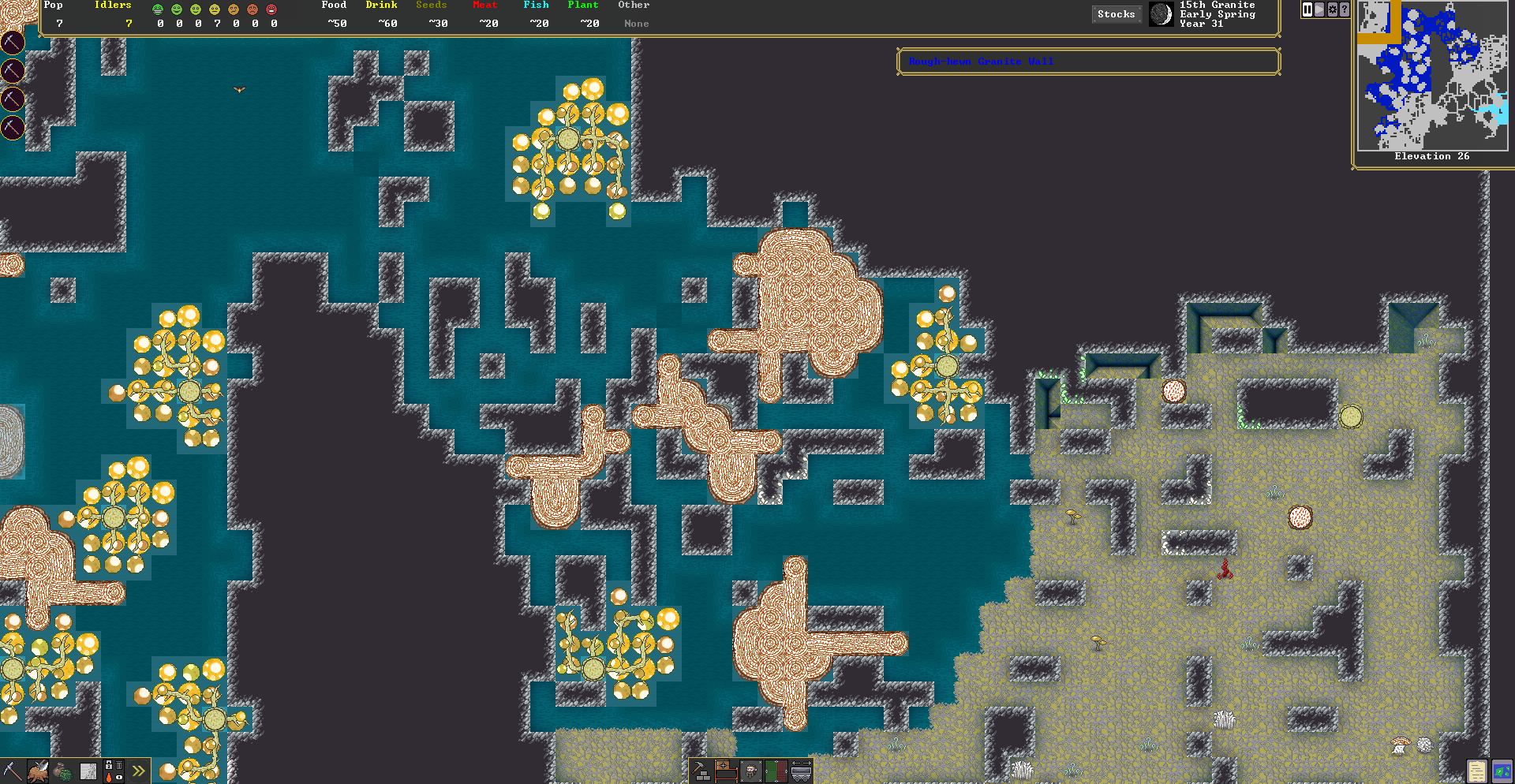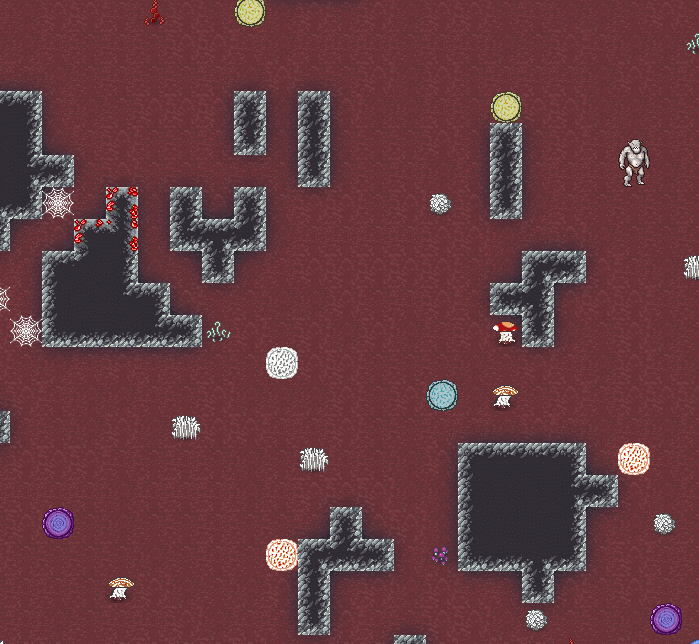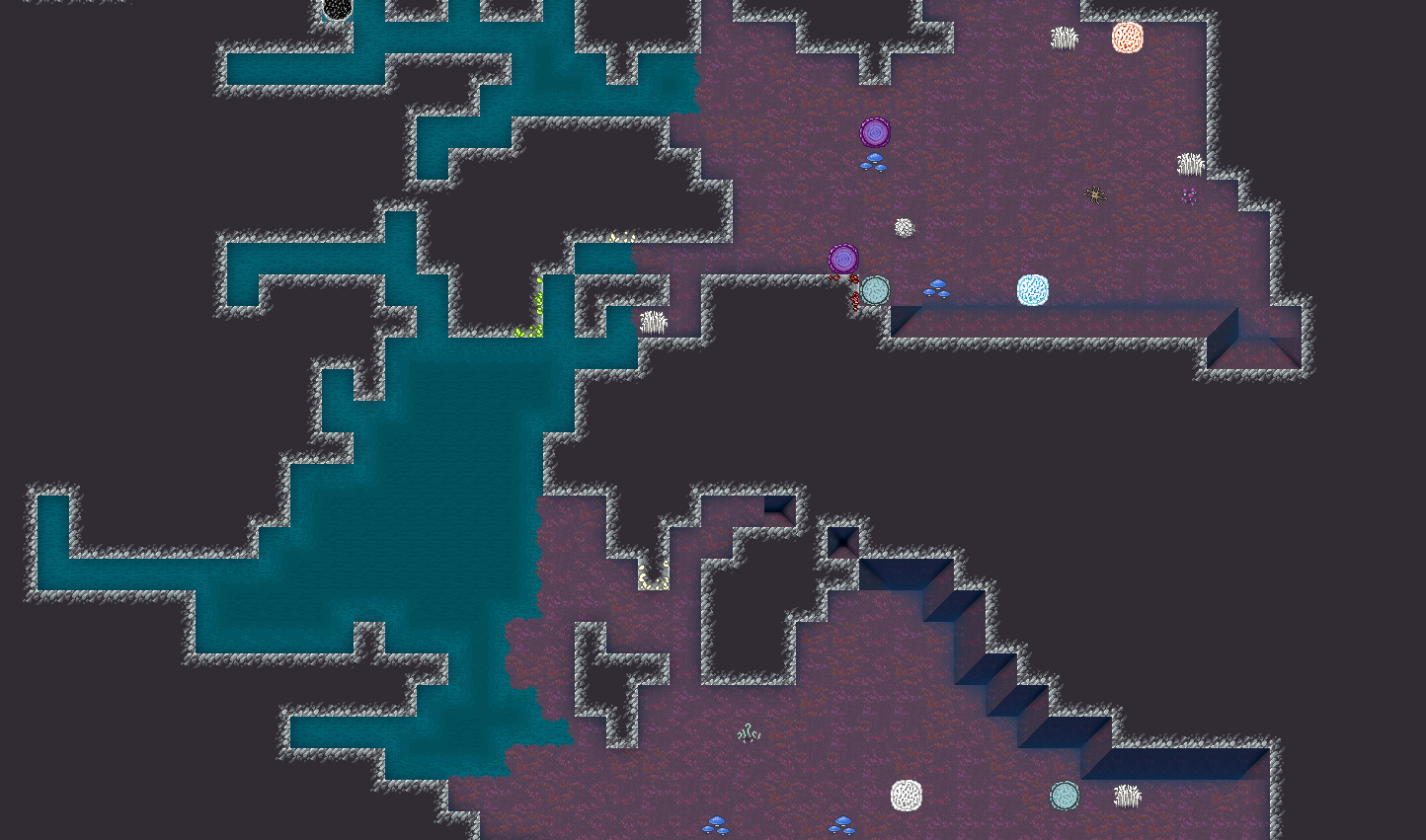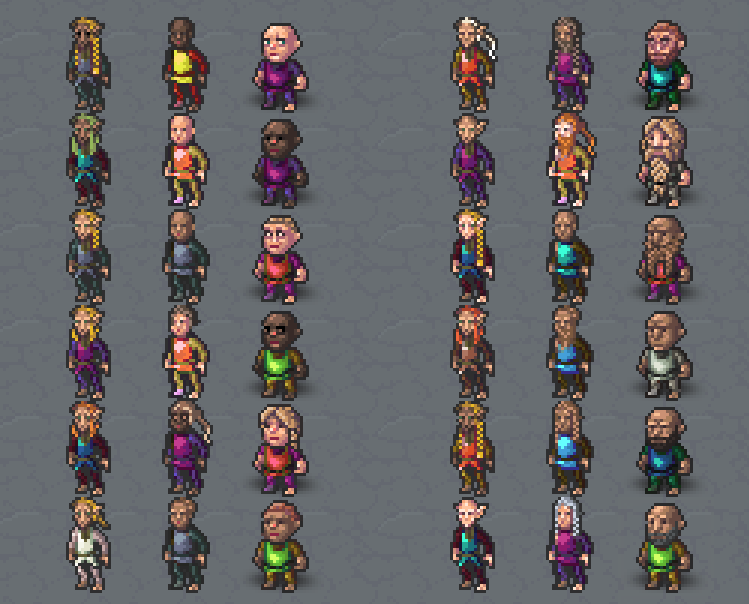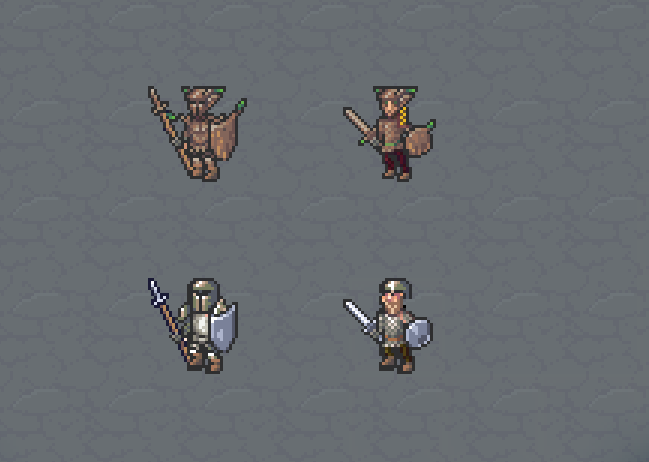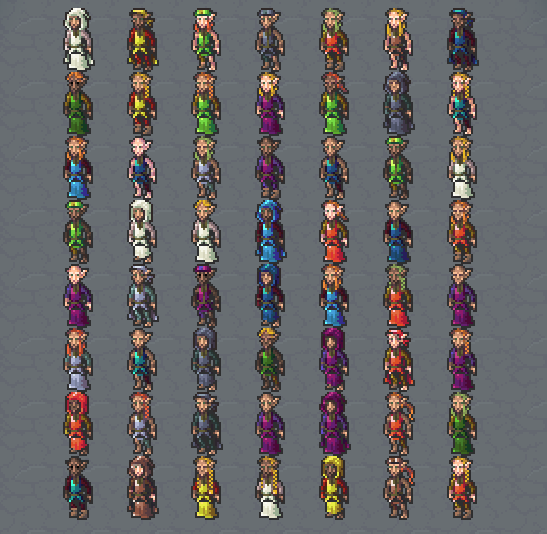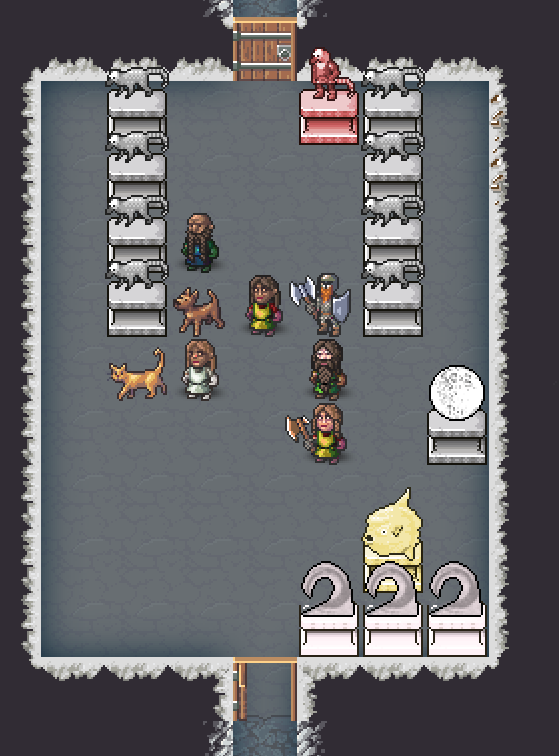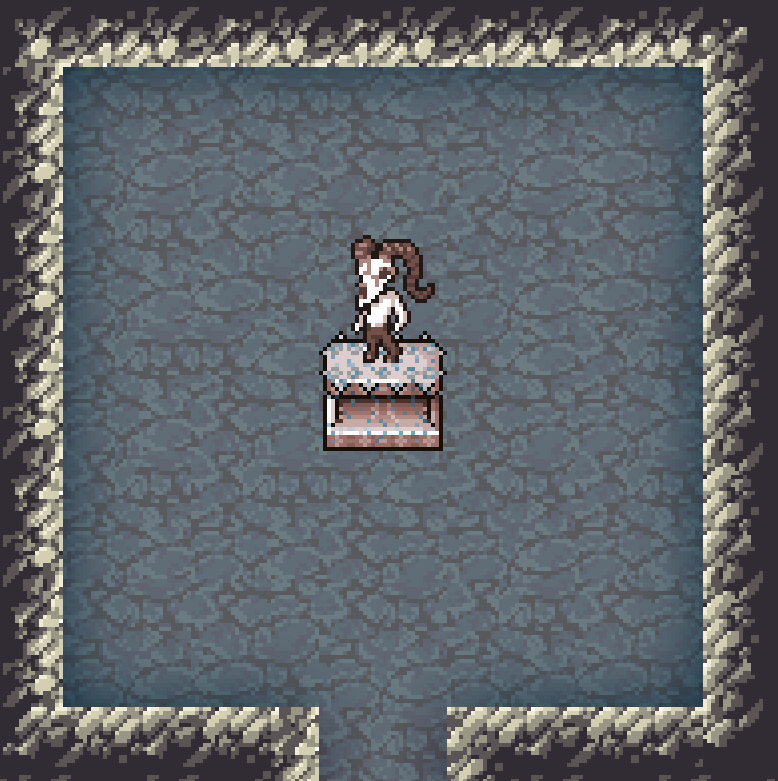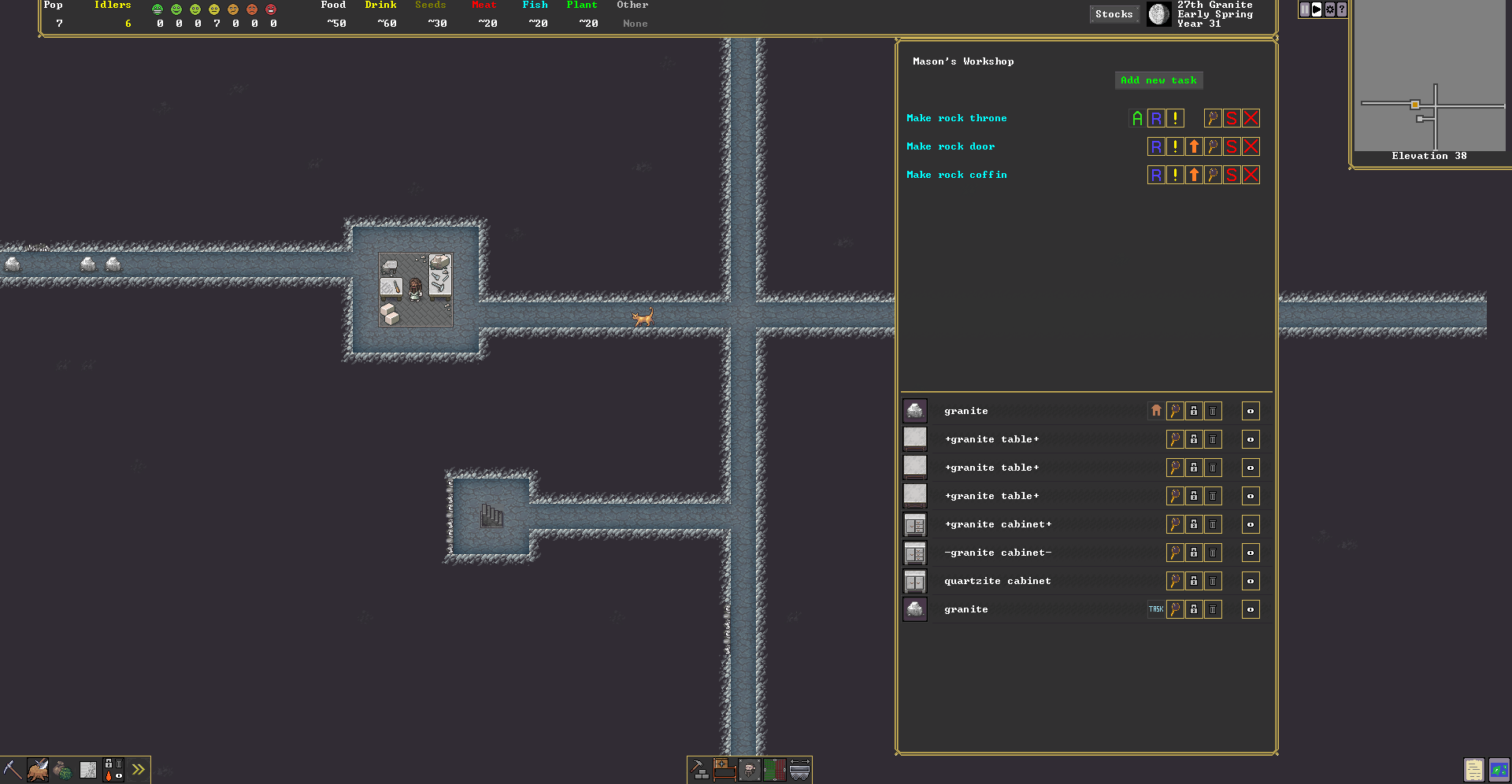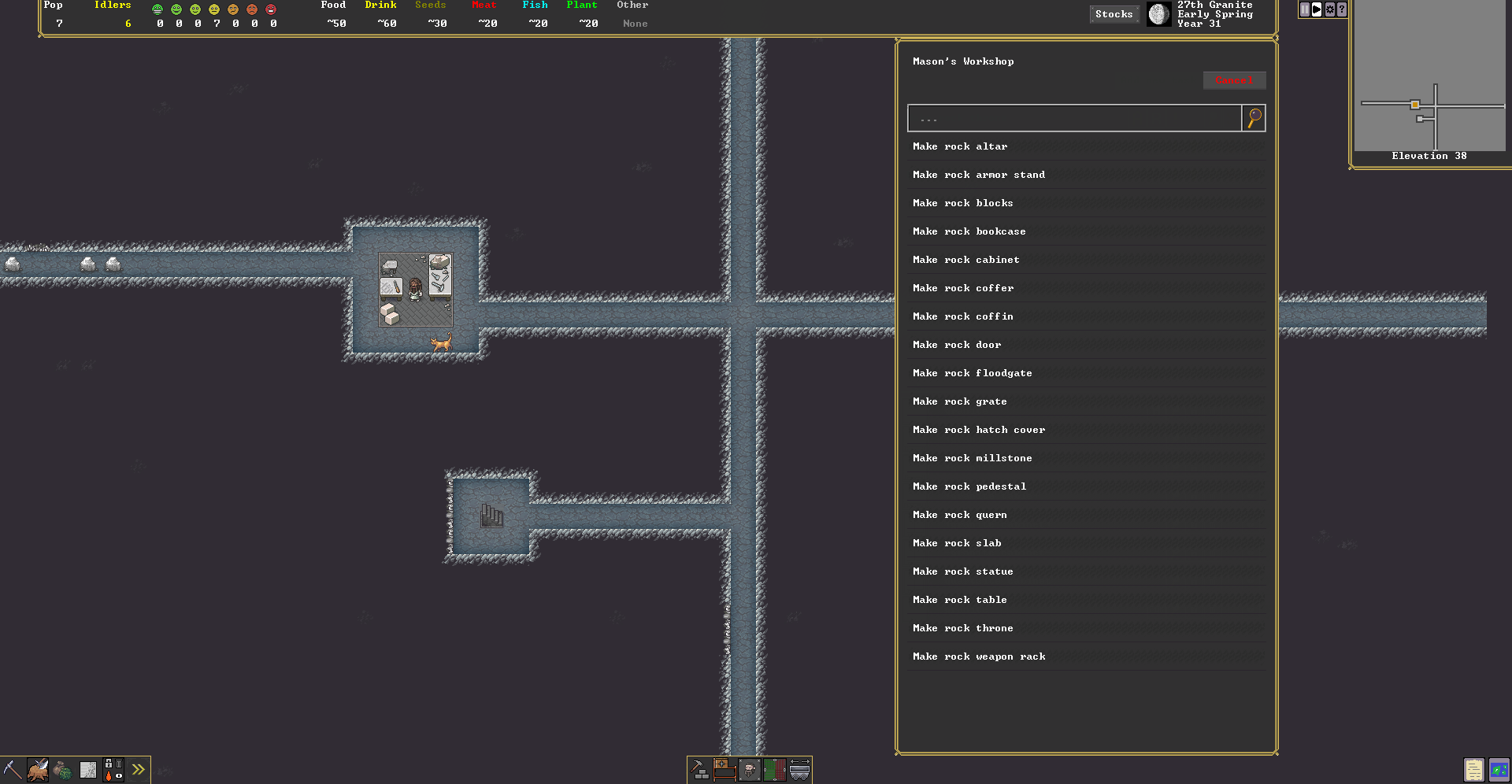
Dwarf Fortress - Not Alex
Hello again!
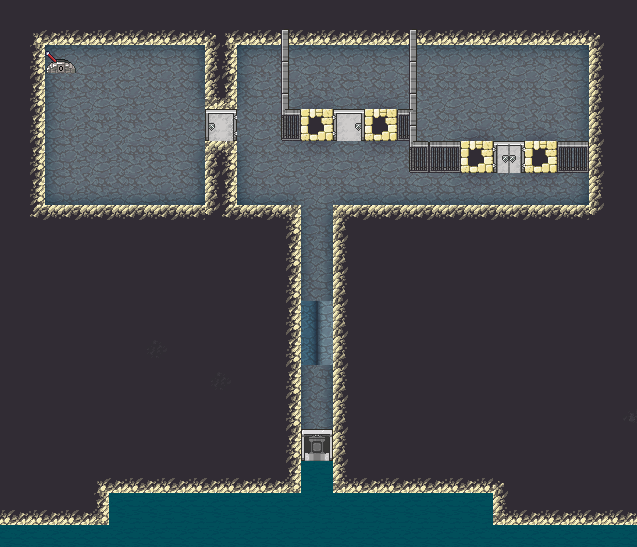
Here's a little setup I've carved out at the underground level where the water flows in a brook. Near the bottom of the image, a stone floodgate holds the water back. The channel to the north of it has a ramp for access from above, coming down from the grassy field by the brook. We also have vertical bars forming a few large cells in the upper right. The shape shown in the individual bar tiles adjusts according to what is nearby. Patrick drew the new bar and floodgate pictures.
The lever in the top left has been connected to the floodgate. I've used a hasty and risky method! As you can see in the animation below, a dwarf can run down and pull the lever, escaping upward just in time before the water comes rushing in.

You can see in the image how water blockages works. Water can rush through vertical bars, but it is blocked by floodgates and doors. Floodgates are safer since dwarves can open doors by default and it's a bit dangerous to rely on them. Players make drowning chambers in a variety of designs for various reasons.
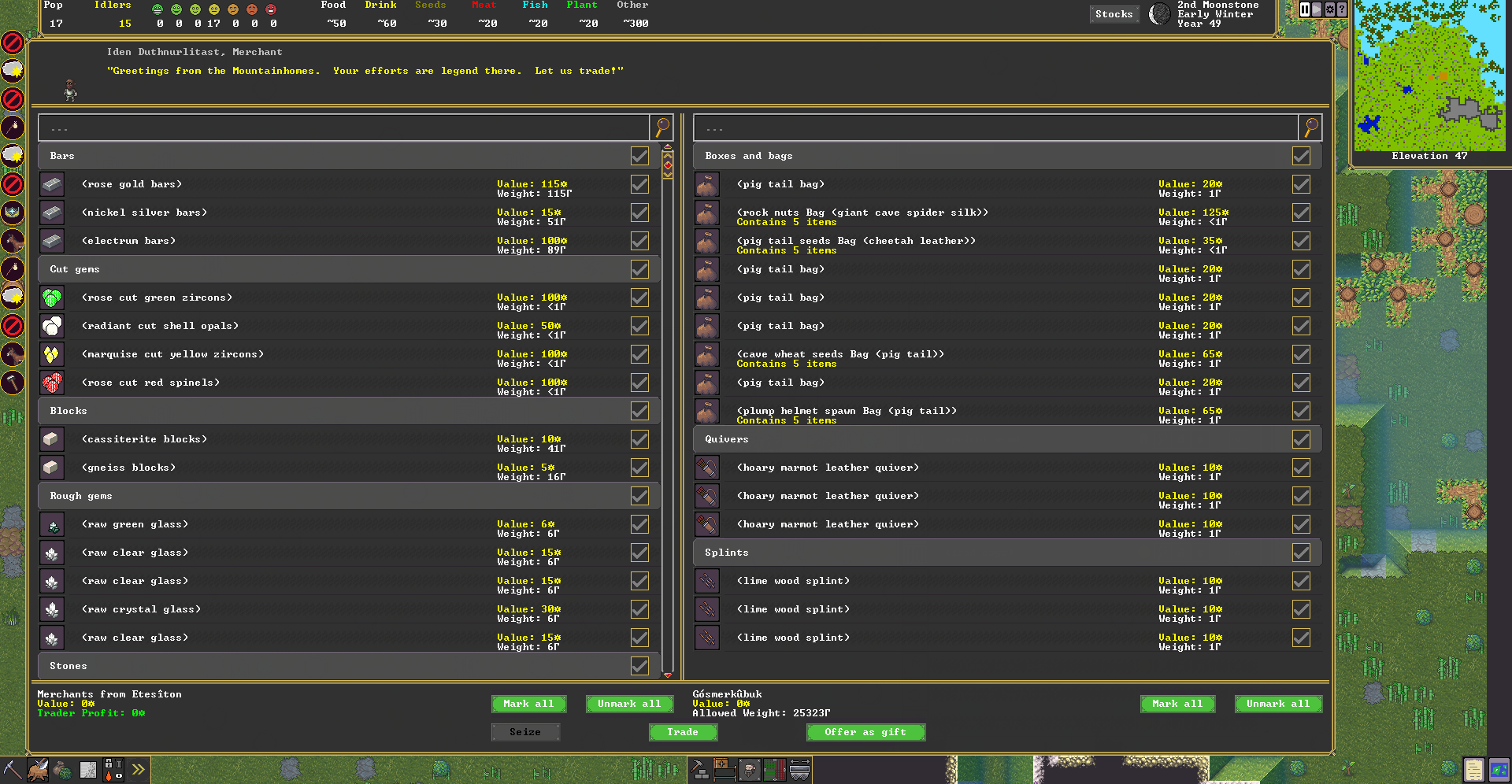
I've also more or less completed the trade screen, where you actually exchange items with the merchants that arrive periodically throughout the year. This is reasonably similar to the old trade screen, aside from all the mouse support, as well as the search filters. You can also collapse both headings and container lists by clicking on them, though I should probably add a specific button for that. The dwarf merchant there up at the top is placed so low since we need to support much larger creatures, though I should get a chance to even that out for different sizes. So, a few things left to do, but it's going pretty well.
- Tarn

Here's a little setup I've carved out at the underground level where the water flows in a brook. Near the bottom of the image, a stone floodgate holds the water back. The channel to the north of it has a ramp for access from above, coming down from the grassy field by the brook. We also have vertical bars forming a few large cells in the upper right. The shape shown in the individual bar tiles adjusts according to what is nearby. Patrick drew the new bar and floodgate pictures.
The lever in the top left has been connected to the floodgate. I've used a hasty and risky method! As you can see in the animation below, a dwarf can run down and pull the lever, escaping upward just in time before the water comes rushing in.

You can see in the image how water blockages works. Water can rush through vertical bars, but it is blocked by floodgates and doors. Floodgates are safer since dwarves can open doors by default and it's a bit dangerous to rely on them. Players make drowning chambers in a variety of designs for various reasons.

I've also more or less completed the trade screen, where you actually exchange items with the merchants that arrive periodically throughout the year. This is reasonably similar to the old trade screen, aside from all the mouse support, as well as the search filters. You can also collapse both headings and container lists by clicking on them, though I should probably add a specific button for that. The dwarf merchant there up at the top is placed so low since we need to support much larger creatures, though I should get a chance to even that out for different sizes. So, a few things left to do, but it's going pretty well.
- Tarn





